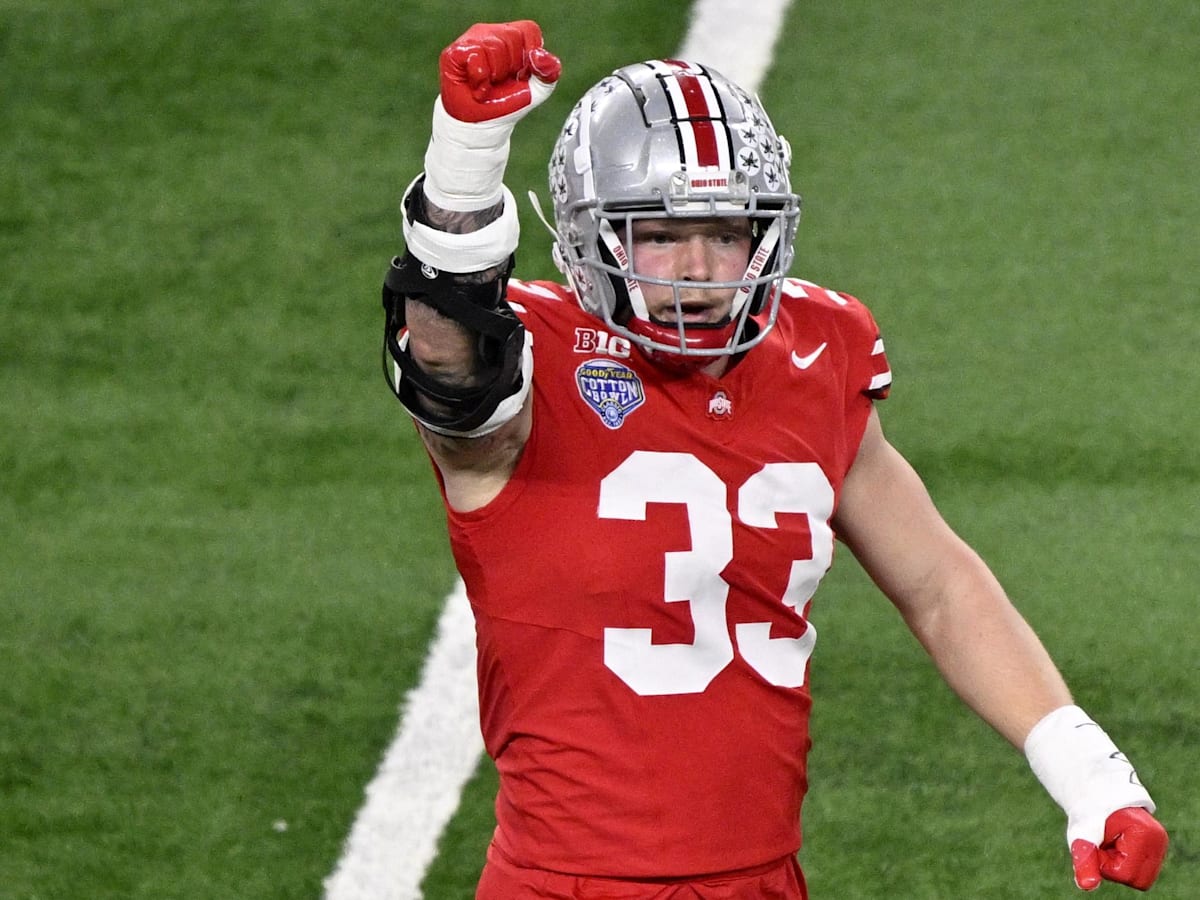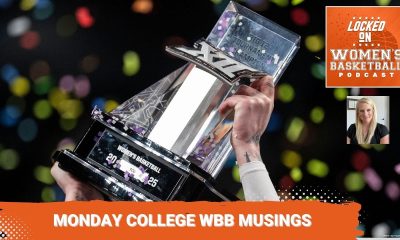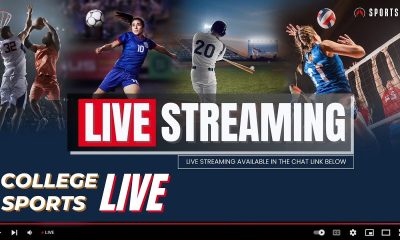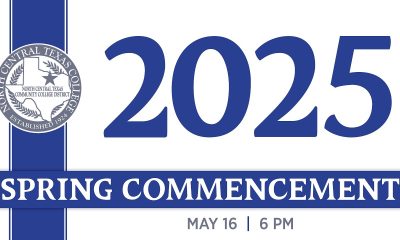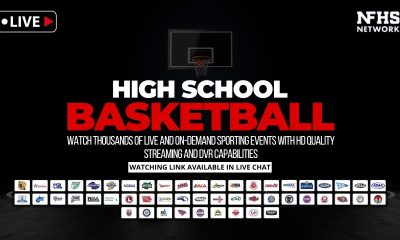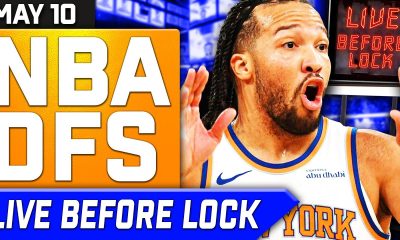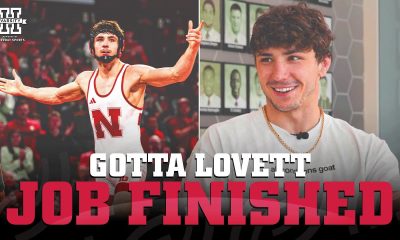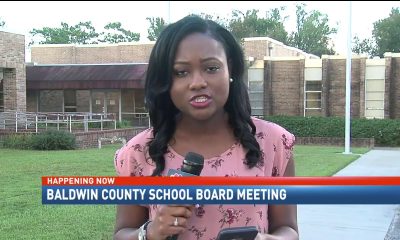College Sports
Ohio State Buckeyes vs Notre Dame Fighting Irish EARLY Look At National Championship
1
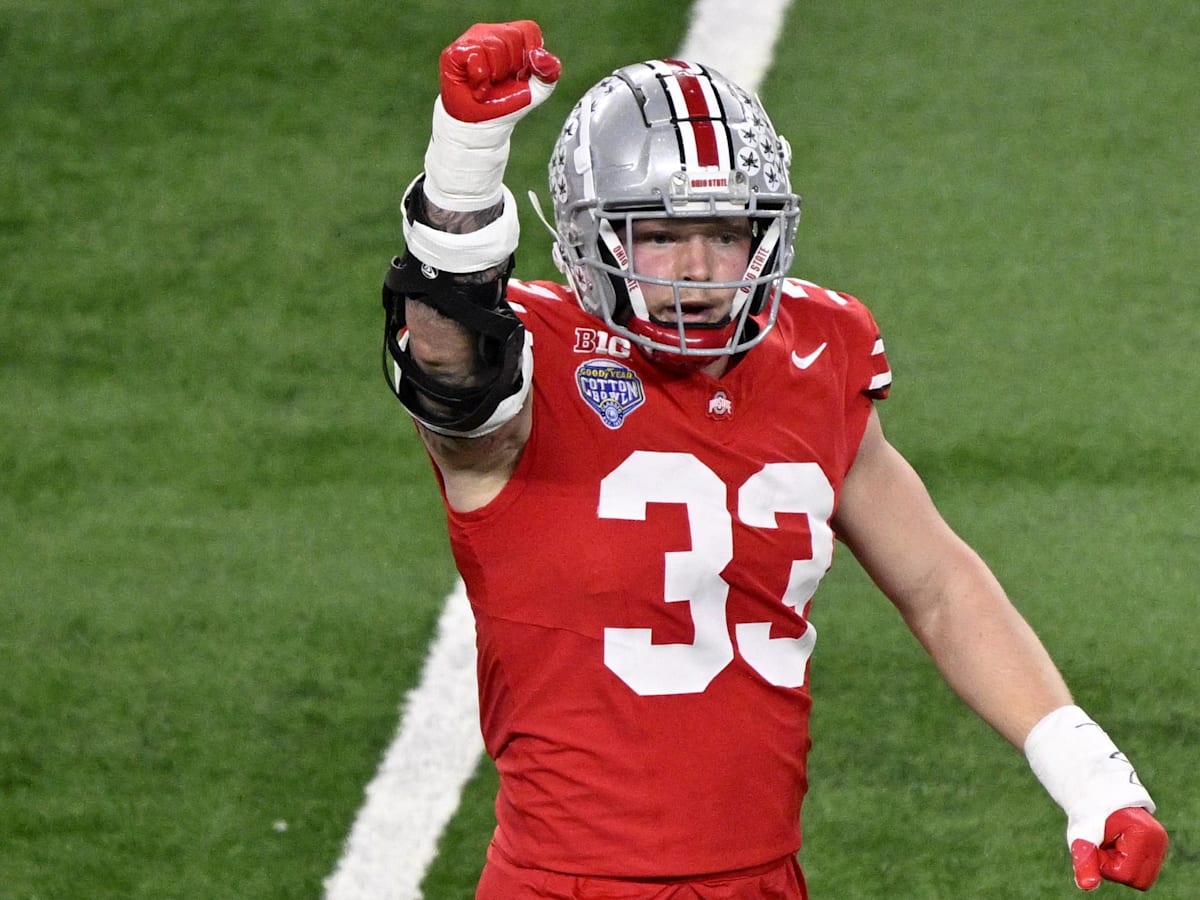
College Sports
New hockey head coach Brock Sheahan takes the helm
A page is turning in the Notre Dame hockey history books. After 20 years with legendary head coach Jeff Jackson at the helm, a new era arrived last month when the team introduced alumnus and former associate head coach Brock Sheahan as its next head coach. Jackson’s tenure brought unprecedented success for the Fighting Irish, […]

A page is turning in the Notre Dame hockey history books.
After 20 years with legendary head coach Jeff Jackson at the helm, a new era arrived last month when the team introduced alumnus and former associate head coach Brock Sheahan as its next head coach. Jackson’s tenure brought unprecedented success for the Fighting Irish, but a disappointing 2024-25 season leaves Sheahan’s group entering the summer with urgent questions to answer.
A legend retires
Jeff Jackson never wanted his final season to be about him. By all accounts, he got his wish until the end of the year, when the Irish rightfully celebrated him at his last home game, where he reached a milestone 600 wins.
“Jeff, you really, more than anybody, have put Notre Dame hockey on the national map as one of the true powerhouses of hockey,” athletic director Pete Bevacqua told Jackson at a press conference on April 9. “We’ll never be able to thank you appropriately or enough for everything you’ve done for Notre Dame hockey.”
There wasn’t too much else to celebrate during the 2024-25 season, though. The Irish finished with a 12-25-1 record, their worst in Jackson’s 20 years behind the bench. They also failed to make the NCAA tournament for the third straight season. They were out of the running early on after losing seven straight games in November, going on to split a home conference series with No. 54-ranked Lindenwood at home in January and win just four of 24 Big Ten conference games.
That’s not to say there weren’t any bright spots, though. The team competed at some special venues, including SSE Arena in Belfast, Northern Ireland, over Thanksgiving and outdoors at Wrigley Field in Chicago just after New Year’s.
A handful of players also had standout seasons. Sophomore forward Cole Knuble became the first Irish player to average over a point per game since Alex Steeves in 2020-21, tallying 39 points in 34 games, nearly doubling his point total from last year. Senior forward Justin Janicke enjoyed the best season of his career, scoring a career-high 15 goals, including eight on the power-play. Junior netminder Owen Say, a transfer from Mercyhurst, kept the Irish in several games, posting a .929 save percentage. He parlayed his play into an NHL contract with the Calgary Flames at the year’s end.
Janicke and Say join 11 senior and graduate students departing Notre Dame after this year. Among the departures are graduate students Grant Silianoff and Zach Plucinski, who spent the last five seasons at Notre Dame. Silianoff was a key depth forward, while Plucinski served as a defensive anchor. Five more four-year seniors will graduate as well, including three single-season graduate transfers. In all, Notre Dame will lose 1,295 games of college hockey experience this offseason.
The Sheahan era begins
Just a week after the end of the 2024-25 season, Sheahan officially took the reins of the Irish hockey program.
The story of his tenure doesn’t begin there, though. To find that, you’d have to go back to 2012-13, when Sheahan was wrapping up his East Coast Hockey League career with the Ontario Reign. A 2008 Notre Dame graduate, Sheahan discussed with his wife, Ashley, a Saint Mary’s College graduate, what would come next.
“I said, I think I could be the next head coach at the University of Notre Dame, 10 or 12 years from now,” Sheahan recounted in his introductory press conference on April 9.
A decade later – after stops at Holy Cross College in Worcester, Mass., the United States Hockey League’s (USHL) Chicago Steel and the American Hockey League’s Chicago Wolves – that day finally arrived.
“The opportunity to lead Notre Dame hockey is a dream come true for me and our entire family,” he said.
Sheahan very clearly holds Notre Dame close to his heart. As a player with the Irish from 2004 to 2008, he helped Notre Dame to its first Frozen Four in 2008. He also met his future wife while at Notre Dame and returned to start his coaching career as a volunteer assistant coach in the 2013-14 season. Sheahan came back to Notre Dame as an associate head coach prior to the 2023-24 season.
“I believe Notre Dame is the best of everything,” Sheahan said. “There’s one place, one place I want to coach in college,” he said.
Teams that Sheahan previously coached found success when he held the head coaching job. Promoted midseason to head coach of the Chicago Steel in the 2019-20 season, his team won the regular season title the next two seasons and the league championship in 2021. Sheahan reached 100 wins in just over two seasons with the Steel and compiled a 35-29-5 record in his lone season with the Wolves.
Irish face offseason questions
Sheahan assumes the top job at an Irish hockey program that has not finished above .500 since the 2021-22 season, their longest stretch without a winning season since between 1999 and 2003. The new bench boss did not shy away from recognizing that the Irish program has faced some recent adversity and is likely face some more.
“I actually believe this is one of our biggest strengths going into the future, is we have, and I’ve been here for this, is we’ve faced some real adversity the past two years,” Sheahan said. “And if we lean into that next season, this spring, this summer, I believe that’s going to lead to success for the program, in short order.”
Still, given the relative lack of results in recent years, it is understandable to ask whether the Irish may be in need of a rebuild. The players that are leaving this summer scored 45% of the team’s goals in the last season, and the Irish are ranked a middling No. 37 nationally with 2.7 goals-per-game. The Irish also lost their best netminder in Say, who made 35 or more saves in six games this year. Those losses, coupled with the overall downward trend in the standings, seem to indicate that it’s time to rethink some things. Yet, Sheahan remains optimistic.
“This is not a rebuild,” Sheahan asserted. “I believe we have the right people. [The returning players] give me a ton of confidence moving into the future.”
Perhaps rightfully so. Notre Dame’s top two centers for the last two seasons, Danny Nelson and Knuble, will be juniors next year with a deeper breadth of experience. The cupboard is not empty in goal either, where Washington Capitals draft pick Nick Kempf will return after playing 13 games in his freshman season. Succeeding as a freshman goaltender in college hockey is difficult, but Kempf will benefit from the added experience from his rookie season. Four experienced defensemen – junior Michael Mastrodomenico, junior Axel Kumlin, sophomore Paul Fischer and sophomore Henry Nelson – will lead Notre Dame’s defense.
“We have way more talent than people think in our locker room,” Sheahan said.
Still, with just 17 players on their roster, an influx of talent will be necessary. According to reports from the team’s social media accounts, the Irish have inked at least seven signees for next season, not including one confirmed transfer portal addition and another that has been reliably reported but not confirmed.
Of the signees, all seven come from two top-tier junior leagues in the Ontario Hockey League (OHL) and USHL. By getting three players from the OHL, Notre Dame took advantage of new rules allowing players from the three Canadian major junior leagues to join NCAA teams. How players from those leagues impact college hockey for the first time will be one of the major storylines of next season.
“A year ago, that wasn’t even a possibility,” Sheahan said. “There’s guys that can run numbers that it’ll be interesting to see how that translates to a much tighter, harder, older college hockey, right?”
Notre Dame, for one, has to hope that their three OHL signees can contribute right away. Forwards Cole Brown and Pano Fimis both totaled over 30 goals last season and will need to bring some added scoring juice to South Bend. Brown, a New Jersey Devils prospect, spent the last four years with the Brantford Bulldogs franchise. He enjoyed the best season of his career this past season, totaling 33 goals and 70 points while playing on a line with league scoring leader Nick Lardis. The undrafted Fimis also posted the best numbers of his career this season with the Erie Otters, lighting the lamp 33 times. He also broke the OHL single-season record for faceoffs won.
Defenseman Caeden Carlisle is another four-year OHL veteran, arriving from the Soo Greyhounds, where he served as captain last season. How all three stack up against college hockey talent remains to be seen.
“We’re hoping they’ll be translatable as far as their compete level, their skating and their skill set,” Sheahan said.
Notre Dame will also add three players from the USHL – defensemen Cameron Aucoin and Danny Klaers along with forward Owen Tylec. Goaltender Patrick Quinlan from the National Team Development Program will also join.
In addition, the Irish announced on May 1 that Rensselaer Polytechnic Institute forward Sutter Muzzatti had joined the team out of the transfer portal. The former Nashville Predators prospect has one year of eligibility remaining, but was limited to just 10 games last year.
Between new recruiting rules, the transfer portal and the impending NCAA vs. House settlement that may limit the number of athletes allowed on team rosters, college hockey is an ever-changing world. Notre Dame’s roster outlook in May reflects that, and there may be more to come.
“We’re still working through the roster,” Sheahan said. “We don’t know where that’s going anyways, with roster limits or not.”
For now, though, it’s enough to say that next year will be full of new things for Notre Dame hockey. It’s appropriate, too, because a new chapter in the program’s history books is waiting to be written.
College Sports
Mike Sullivan brings leadership, winning to Rangers
In December 2015, Mike Sullivan walked into the locker room in Pittsburgh to address a struggling Penguins team for the first time since he replaced Mike Johnston as head coach. The club had gone 15-10-3 to start the 2014-15 season, which was six years removed from its last Stanley Cup and unfolding on the heels […]

In December 2015, Mike Sullivan walked into the locker room in Pittsburgh to address a struggling Penguins team for the first time since he replaced Mike Johnston as head coach.
The club had gone 15-10-3 to start the 2014-15 season, which was six years removed from its last Stanley Cup and unfolding on the heels of an embarrassing five-game, first-round exit to none other than the New York Rangers the campaign prior.
Holdovers from the 2009 championship team in that room wanted to build a dynasty. The closest the Penguins had come to another title was the 2013 conference final, when they were swept by the Bruins in four games. They had lost three seven-game series over the years and were looking to restore their championship pedigree.
Sullivan, who was promoted from his head coaching post with the team’s minor league affiliate in Wilkes-Barre, Pa., came into that room with conviction from his first day.
College Sports
Wellens column: NCAA regional debate requires creative thinking – Duluth News Tribune
Change is coming to the NCAA Division I men’s hockey tournament, but not the change some have been shouting for from center ice the last couple of years. Starting in 2025-26, the NCAA championship committee will use a different mathematical formula to select at-large teams and seed the 16-team NCAA tournament. The Pairwise rankings are […]
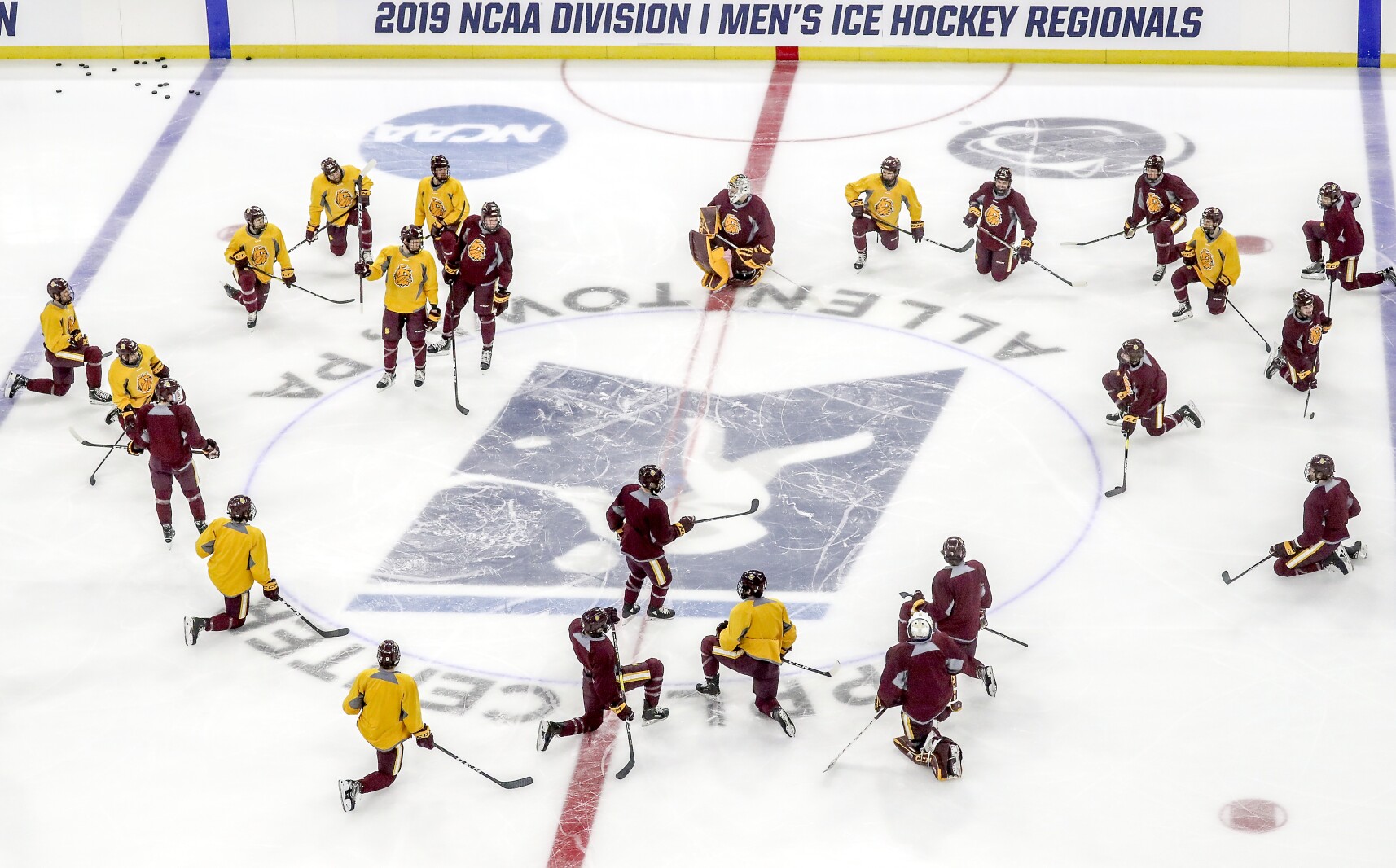
Change is coming to the NCAA Division I men’s hockey tournament, but not the change
some have been shouting for from center ice
the last couple of years.
Starting in 2025-26, the NCAA championship committee will use a different mathematical formula to select at-large teams and seed the 16-team NCAA tournament. The Pairwise rankings are being replaced entirely by the NCAA Percentage Index (NPI).
The NPI is similar to the Pairwise and a version has been used by NCAA Division I women’s hockey as part of their Pairwise rankings since 2022-23. The Division III ranks started using the NPI in 2024-25.
Only college hockey’s biggest math nerds will likely notice much of a difference.
What’s definitely not changing is where the NCAA tournament is being held, which is at neutral sites where college hockey is at best played once a year when an NCAA regional is placed there.
One arena where a regional will be held next season — what is now known as MVP Arena in Albany — only hosts ice hockey these days when an NCAA regional comes around.
As much as some high-profile figures in college hockey want that to change,
it’s not anytime soon. Minor league and junior hockey rinks have been booked as regional sites through the 2027-28 season.
That doesn’t mean discussing the regional format is a waste of time. These conversations need to happen well before bidding opens for 2029 and beyond. Change in men’s hockey takes time, as the move away from the Pairwise and Rating Percentage Index showed.
Advocates of the current system say playing at neutral sites is the most fair way to get to the Frozen Four, but that’s a load of bull because many of the sites regularly being used are not neutral, and only “fair” if the host misses the tournament.
What’s the difference between Denver hosting regionals in 2026 and 2027 at its own Magness Arena vs. 56 miles north at what is now called Blue Arena in Loveland, Colorado?
Why can’t UMass host a regional in 2027 at Mullins Center on campus in Amherst instead of 27 miles south in Springfield, Massachusetts?
Schools are permitted to bid for regionals at their home rinks, but haven’t because they’ve been told preference will be given to “neutral” sites. Let’s flip that and encourage North Dakota to host at Ralph Engelstad Arena in Grand Forks instead of a rink — Scheels Arena — less than half its size 81 miles south in Fargo.

Clint Austin / File / Duluth News Tribune
Consider this the first step toward what some admittedly smart people believe is the best format: The top eight seeds hosting first round games one weekend and the four highest remaining seeds hosting regional finals the next.
If you want a tournament that’s fair, this is it. Under this system, you have to earn a home game, not just bid on it.
The group pushing for this — while growing — remains a vocal minority. There are too many underdogs from smaller leagues who are against this, in addition
to those who think the Pairwise or NPI is not a fair way to determine who gets a home playoff game.
So here’s a twist that might tip the scales: Give six of the eight first-round home games to conference tournament champions while the NPI decides who the other two hosts are.
Will the top eight teams be hosting NCAA tournament games? No, but I’d be willing to bet the arena won’t be half-empty. Raising the stakes of conference tournaments will also be an added bonus.
This idea was actually floated during the coaches convention this month in Florida, and the more I think about it, the more I love it.
The NCAA Division I men’s regionals need a refresh — leave the NCAA Frozen Four alone, it’s great — as badly as some of the arenas they play in. It will likely take baby steps and compromises to get somewhere.
Let’s start taking those steps now and not be afraid to think outside the box along the way.
College Sports
Dartmouth Wins Multiple Events in Final Split-Squad Meets
By: Maddie Omana Story Links CAMBRIDGE, Mass. – The Dartmouth men’s and women’s track and field teams had their final split-squad meets of the season on Thursday evening, with student athletes competing at the UMass Last Chance Qualifier and the MIT Final Qualifier. UMass Last Chance Qualifier On the throwing side, […]

CAMBRIDGE, Mass. – The Dartmouth men’s and women’s track and field teams had their final split-squad meets of the season on Thursday evening, with student athletes competing at the UMass Last Chance Qualifier and the MIT Final Qualifier.
UMass Last Chance Qualifier
On the throwing side, Colton McMaster won the shot put with his 17.31m finish, which is good for fourth all-time. Additionally, McMaster clinched the discus with his 51.44m mark. Cate Schelly won the women’s discus with a 46.10m throw.
Jada Jones continued her success, clinching the 200m for the Big Green with a final time of 23.80.
Mariella Schweitzer placed first in the long jump with her 5.92m mark, while Charlotte DiRocco placed second in the high jump after clearing 1.65m.
Painter Richards-Baker triumphed in the 110m and 400m hurdles, winning both events with 15.39 and 53.25 finishes, respectively. Liam Murray finished second in the 400m, recording a time of 47.27.
MIT Final Qualifier
Andie Murray, who holds the third all-time best finish in the 800m, set a personal record in the event with her 2:05.32 finish.
Albert Velikonja was the runner-up in the 1500m and put himself at second all-time with his 3:42.67 mark. Ashton Bange finished fourth in the event and set a personal record after recording a 3:47.34 finish.
ALL-TIME RESULTS
Men’s 1500m
- 3:40.17 – Ben True – 2007
- 3:42.67 – Albert Velikonja – 2025
- 3:43.42 – Sean O’Neal – 1985
- 3:43.81 – Eric Gibson – 2022
- 3:44.85 – Sam Wilbur – 1994
- 3:45.02 – Silas Talbot – 2015
- 3:45.20 – Ben Gose – 1992
- 3:45.26 – Henry Raymond – 2018
- 3:45.35 – Harry Norton – 2008
- 3:45.36 – Steve Mangan 2012
Men’s Shot Put
- 19.89 – Adam Nelson – 1997
- 18.00 – Max Klein – 2023
- 17.45 – Wayne Moody – 1973, 17.45 – Ted Moody – 1972
- 17.31m – Colton McMaster – 2025
- 17.25m – Burt Anderson – 1991
- 17.12m – Ken Jansson – 1979
- 17.08m – Shaun McGregor – 2000
- 17.01m – Pacey Pet – 1982, 17.01m – Jeff Rettig – 1991
- 16.89m – Marty Perkins – 1991
- 16.87m – Peter Kortebein – 1986
Women’s 800m
- 2:03.81 – Julia Fenerty – 2023
- 2:03.82 – Megan Krumpoch – 2014
- 2:05.32 – Andie Murray – 2025
- 2:06.99 – Meggie Donovan – 2014
- 2:07.35 – Annie Jackson – 2024
- 2:07.40 – Bella Pietrasiewicz – 2025
- 2:07.86 – Kristin Manwarning – 1996
- 2:08.11 – Abbey D’Agostino – 2013
- 2:08.12 – Abbey Livingston – 2018
- 2:08.15 – Cecily Garber – 2003
College Sports
Hwang earns All-Liberty League Second Team honors
Story Links TROY, N.Y. – Johnny Hwang, a first-year from the Skidmore College golf team, earned All-Liberty League Second Team recognition as announced on Thursday. Johnny Hwang (Fy., Falmouth, Maine) – All-Liberty League Second Team Hwang led Skidmore with a 74.67 scoring average over 10.5 rounds, including a ninth-place finish at […]

TROY, N.Y. – Johnny Hwang, a first-year from the Skidmore College golf team, earned All-Liberty League Second Team recognition as announced on Thursday.
Johnny Hwang (Fy., Falmouth, Maine) – All-Liberty League Second Team
Hwang led Skidmore with a 74.67 scoring average over 10.5 rounds, including a ninth-place finish at the Liberty League Championship in April with rounds of 74, 36 (9 holes), 72. Arriving as a mainstay to the team’s lineup in the spring, Hwang had the second of the team’s two rounds in the 60s for the season when he shot a 69 in the second round of the Tim Brown Invitational in a round that featured four birdies in a row and a 13-hole period played at 6-under par.
2024-25 All-Liberty League Men’s Golf Teams and Awards
PLAYER OF THE YEAR: Shibo Wang, Rochester
ROOKIE OF THE YEAR: Luke Evans, Rochester
COACHING STAFF OF THE YEAR: Rochester
ALL-LIBERTY LEAGUE FIRST TEAM
Arjun Aujla, Rochester
Matt Buckley, RPI
Luke Evans, Rochester
Kevin Kim, NYU
Jomyuth Luangtana-anan, NYU
Shibo Wang, Rochester
ALL-LIBERTY LEAGUE SECOND TEAM
Johnny Hwang, Skidmore
Jacob Lindsay, RPI
Eddie Ren, Rochester
Alvin Su, Rochester
Oscar Uribe, NYU
ALL-LIBERTY LEAGUE HONORABLE MENTION
Ryan Komp, RPI
Sam Lyman, St. Lawrence
Eric Spoth, Clarkson
College Sports
Three Penn State wrestling connections are picked to win at the World Team Trials this weekend
Penn State wrestling is already set to be represented by Luke Lilledahl and Mitchell Mesenbrink at Final X. The June event will feature 20 men’s and women’s freestyle matches to determine the 2025 U.S. Senior team, which will compete at the World Championship later this year. Before that, the U.S. World Team Trials will be […]

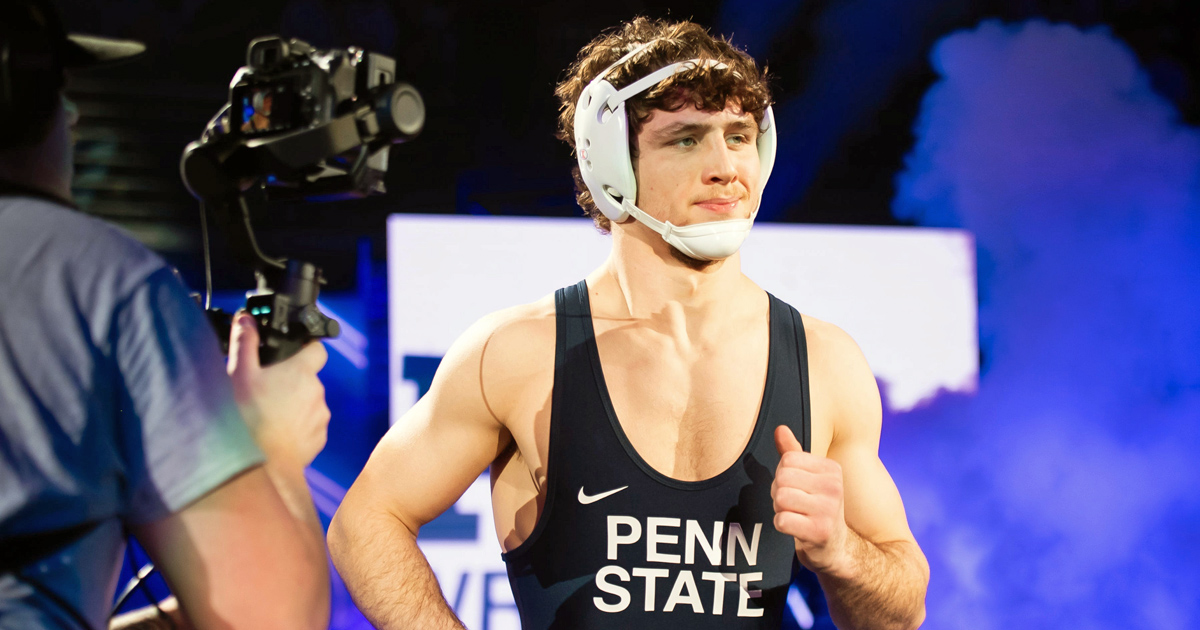
Penn State wrestling is already set to be represented by Luke Lilledahl and Mitchell Mesenbrink at Final X. The June event will feature 20 men’s and women’s freestyle matches to determine the 2025 U.S. Senior team, which will compete at the World Championship later this year. Before that, the U.S. World Team Trials will be held this Friday and Saturday in Louisville. That’s where PSU and Nittany Lion Wrestling Club connections can punch their ticket to join Lilledahl and Mesenbrink, and Kyle Snyder in New Jersey. And, one national writer thinks that more than a few will.
Writing for FLO Wrestling, Jon Kozak predicts three Penn State connections will take first this weekend. He projects that senior Levi Haines will win the 79 kilogram (174.1 pounds) bracket while redshirt sophomore Josh Barr claims the 92 kilogram (202.8 pounds) division. He picked the Nittany Lion to do so before Jacob Cardenas dropped from the bracket. Now, Barr might be an even bigger favorite. And, beyond current members of Cael Sanderson’s team, Kozak also has NLWC member and two-time Olympic bronze medalist Kyle Dake taking the 86 kilogram (189.5 pounds) title.
Learn more about the Penn State wrestling connections competing at the U.S. World Team Trials by watching the latest BWI wrestling show below!
“The 79 kg bracket at the WTT is essentially a smaller version of the 79 kg bracket from the US Open,” Kozak writes. “In Vegas, DJ Hamiti finished as the runner-up with a tech fall over Kennedy Monday while losing to Evan Wick in the finals 9-1. Simon Ruiz finished in third place at the US Open, also only losing to Evan Wick (9-5) but defeating Carson Kharchla (twice, 3-2 and 7-7) and Muhamed McBryde (6-4). From these results, Hamiti should be considered a slight favorite, but Ruiz and Kharchla are interesting challengers capable of making a run to the finals.
“Levi Haines is the only wrestler in this bracket who didn’t wrestle at the US Open. While Haines lost to Hamiti at the NCAA Tournament, Haines is capable of winning this bracket in Louisville. Haines hasn’t competed much in freestyle, but he notably finished 4th at the 2024 World Team Trials at 79 kg. There, Haines lost to Jordan Burroughs and David Carr but defeated US Open winner Evan Wick (by pin) and Keegan O’Toole (6-0). Haines’ wrestling translates well to freestyle, and he has incredible potential to win in Louisville and at Final X.”
The action begins 10 a.m. ET on Friday with preliminary round action. The first session closes by 2:30 p.m. ET following the quarterfinal round. The semifinals and consolation bracket action run 4-7:30 p.m. ET on Friday. And, the finals are at 2 p.m. ET on Saturday. FLO is streaming the event. Here’s the list of Penn State connections:
Penn State signee Marcus Blaze and program alum Beau Bartlett – 65 kilograms (143.3 pounds)
Nittany Lion signee PJ Duke – 70 kilograms (154.3 pounds)
Penn State senior Levi Haines – 79 kilograms (174.1 pounds)
Nittany Lion alum Carter Starocci and NLWC member Kyle Dake- 86 kilograms (189.5 pounds)
Penn State redshirt sophomore Josh Barr – 92 kilograms (202.8 pounds)

-
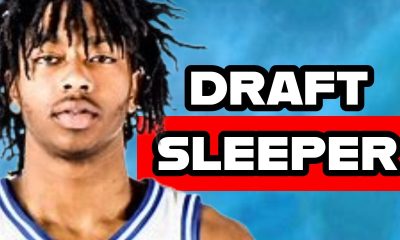
 College Sports2 weeks ago
College Sports2 weeks agoDuke basketball's Isaiah Evans on 2025 NBA Draft early entry list
-

 Fashion2 weeks ago
Fashion2 weeks agoHow to watch Avalanche vs. Stars Game 7 FREE stream today
-

 High School Sports1 week ago
High School Sports1 week agoWeb exclusive
-

 Sports1 week ago
Sports1 week agoPrinceton University
-

 Sports7 days ago
Sports7 days ago2025 NCAA softball bracket: Women’s College World Series scores, schedule
-

 Motorsports1 week ago
Motorsports1 week agoBowman Gray is the site of NASCAR’S “Advance Auto Parts Night at the Races” this Saturday
-

 NIL1 week ago
NIL1 week ago2025 Big Ten Softball Tournament Bracket: Updated matchups, scores, schedule
-
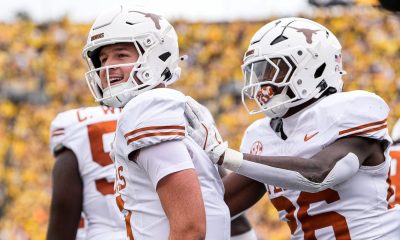
 NIL3 weeks ago
NIL3 weeks agoHow much money will Quinn Ewers make in NFL? Salary, contract details
-

 Motorsports1 week ago
Motorsports1 week agoMOTORSPORTS: Three local track set to open this week | Sports
-
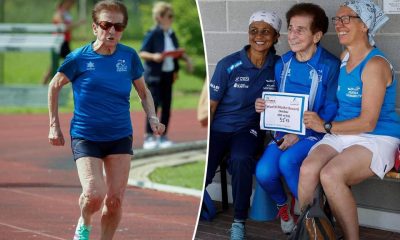
 Sports3 weeks ago
Sports3 weeks agoItalian woman, 91, breaks running record — what makes her body different, according to doctors

